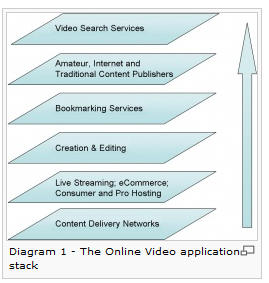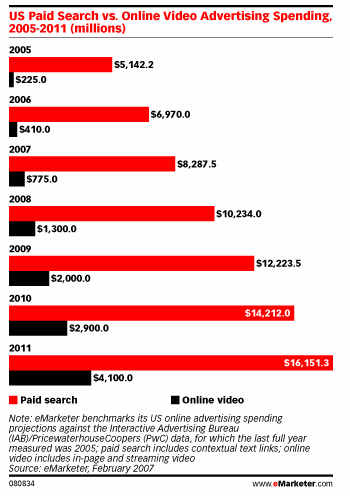With apologies to Buggles – whose 1979 hit remembers the golden era of radio while celebrating the unrelenting force of technology to re-shape media.
It’s TV’s turn now. Web & Social video are set to reshape both media.
Locally stealth start-ups Overlay.tv and FaveQuest are playing in this area, as are local content producers like RaceDV. What’s happening locally is echoed elsewhere with video producers and aggregators/sharing sites opening daily it seems. Each of them focused at different areas of the video sharing stack.
As everyone who’s looked at this area knows, viewer ship is exploding and with it ad revenue, and influnce.
In fact some commentators believe that the web will overtake TV as the major source of ad spend. For that to happen the web has to attract brand and product positioning advertising – not just transactional advertising.
Video presents some particular problems though – even for transactional ads. For ads to be effective they need to be embedded with the video – not on the same page as it. That’s why Viddler’s ad tagging technology is so promising – it puts the ads right in the video stream. Its potential impact on TV is nicely reviewed on Philadelphian Mel Taylor’s site (Philadelphia is home to Viddler and a city that is turning it’s self into an interactive media hub)
[Vodpod id=ExternalVideo.441477&w=425&h=350&fv=]
Viddler’s original technology – in video commenting is incredibly powerful because it allows community to develop even as the video spreads from site to site through viral embedding. The ad technology is a logical extension of that.
What also isn’t clear to me is the business model – because I believe they are focusing at the wrong point in the stack. As I see it they believe these features will drive people to their site both to publish and consume video. I’m not so sure. I believe that web video will, like blogging before it, will move from individual user generated content to pro-am and organizations dominating niches.
These sites will be in direct competition for advertisers and viewers – not just with other web based services but with TV as well.
As Viddler demonstrates for ad delivery, and RaceDV does for niche user generated content, the advantage the web services have is that they innovate on numerous levels that TV doesn’t stand chance – because, as the Buggle’s sang “we can’t rewind we’ve gone too far”.


